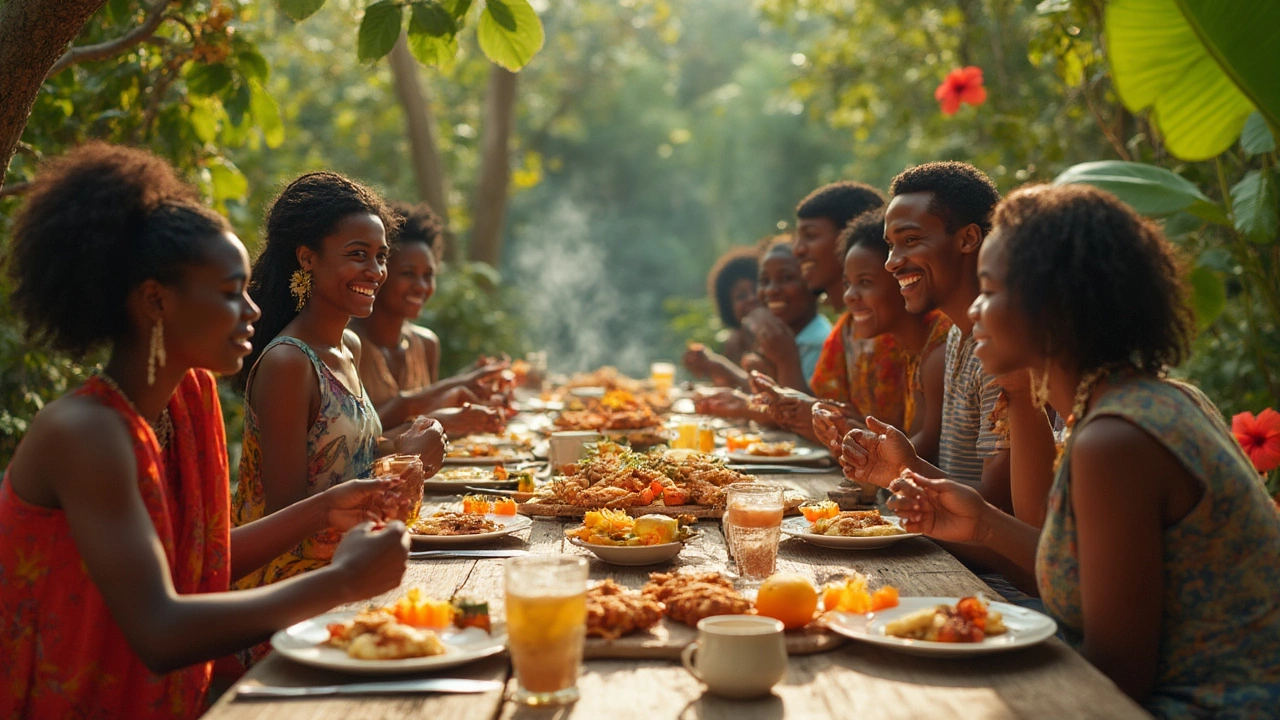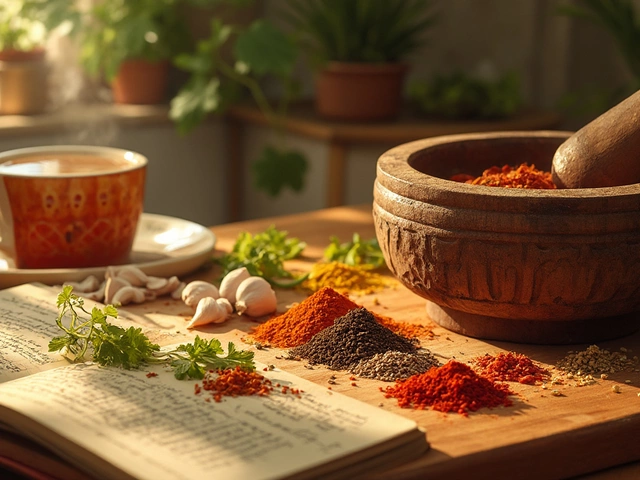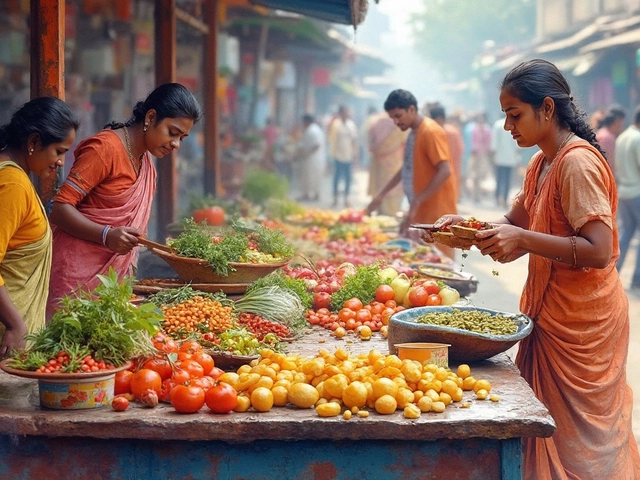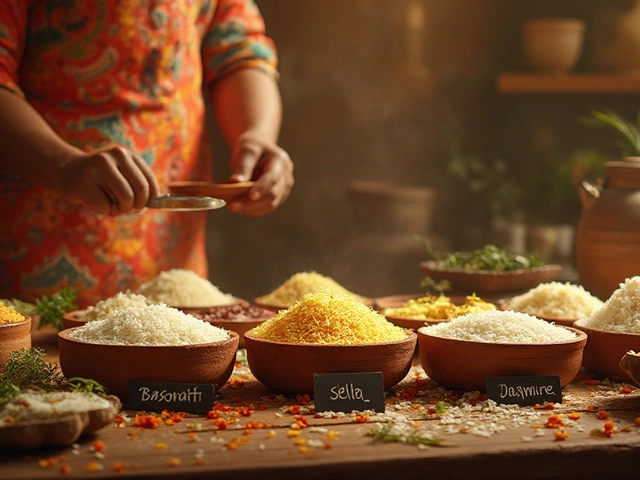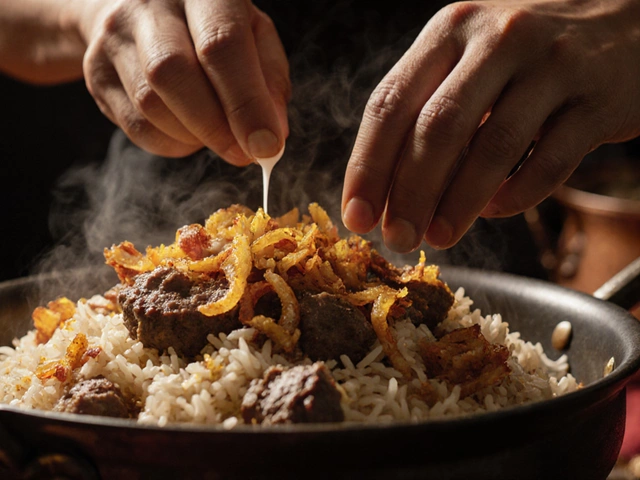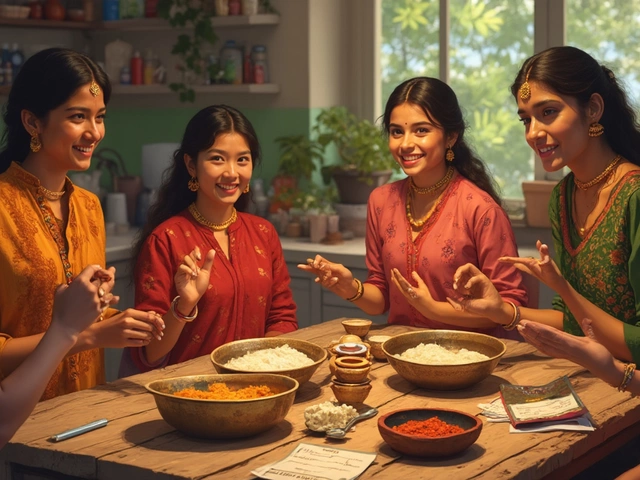Wake up in the West Indies and it smells nothing like bland cereal or quick granola bars. Here, the morning table is alive with stories—of old traditions, bright spices, and flavors that hug you awake. You won’t just taste food; you’ll discover pieces of history tucked between bites of fried plantain and sips of strong bush tea. For anyone who’s wondered what West Indians eat for breakfast, prepare yourself for a deep dive past tourist traps and all-inclusive buffets. The real answer? It’s all about heart, heritage, and food so good, it turns even late risers into early birds.
Essence of West Indian Breakfasts: Uniting Islands with Flavor
The West Indies—or the Caribbean region—is a tapestry of more than twenty-five island nations and territories. Each one has its own twist on what makes a perfect breakfast, but certain basics pull the breakfast scene together. Think locally grown root vegetables, fish netted fresh from the sea, eggs, peppery sauces, and breads that bake up crisp on the outside, soft on the inside. Don’t expect the same fare from Jamaica as you would in Trinidad, or even Barbados. But that’s the magic—breakfast tells you where you’ve woken up, even if you’re eating it at a friend’s house far away from home.
If you ask anyone from the region about breakfast, they’ll likely smile before listing favorites. In Jamaica, the national breakfast is saltfish and ackee, a combination of salted cod and a buttery yellow fruit that’s cooked until creamy. You’ll spot it with fried plantain, festivals (slightly sweet fried dough), or bammy, a spongy cassava flatbread. Head south to Trinidad and Tobago, and you’re talking about doubles (curried chickpeas snuggled between two fluffy bara breads), sada roti with bhaaji (a leafy green spinach stew), or buljol (a tangy saltfish salad). Saint Lucia leans into cocoa tea—like a Caribbean hot chocolate, but richer, deeper, peppered with cloves and cinnamon—served alongside bakes (fry bread) and stewed saltfish.
The drinks? Strong bush teas brewed from everything from lemongrass to soursop leaves, plus the ever-reliable cup of instant coffee. It’s not just fuel—it’s a social ritual. The meal brings people together before the heat and hustle of the day begin. Breakfast is where older generations pass down recipes and kids sneak extra bites of festival dough when no one is looking.
Caribbean breakfast isn’t a rush-job; it’s almost always cooked from scratch. Shops selling patties or pies won’t open before ten—people savor what’s cooked fresh at home. Sometimes, even street vendors offer elaborate plates, like fried fish cakes in Barbados or spicy bake and shark in Trinidad.
Signature Dishes Across the Region
If there’s a thread through West Indian breakfasts, it’s the celebration of what the land and sea offer. Start with Jamaica’s ackee and saltfish. The ackee fruit, native to West Africa but now firmly rooted in Jamaica’s soil, gets cooked with salted cod, onions, tomatoes, and fiery Scotch bonnet peppers. The saltfish is rehydrated overnight, because nobody’s got time for chewy bits in an otherwise creamy dish. Serve it with breadfruit—roasted straight on the flame, never boiled unless you want everyone to talk behind your back at family gatherings.
Trinidad’s take on breakfast is fast, cheap, and addictive. Doubles are always eaten on the go, with plenty of pepper sauce splashed over the top. If you’re not dripping curried chickpeas onto your pants, you’re not doing it right. But that’s just the start. Callaloo—a soup made from dasheen leaves, okra, coconut milk, and crab—often graces morning tables, especially on weekends when families have time to slow down and savor. Pholourie (spiced split pea fritters), fried aloo pies, and sada roti round out the Trinidadian options.
In Barbados, fish cakes rule. These are crunchy golden discs stuffed with salted cod and plenty of seasoning, usually eaten with a chunk of coconut bread or a sticky sweet bun called "lead pipe." Grenadians like their oil down with their breakfast, which is a slow-cooked one-pot made of breadfruit, callaloo, salted meat or fish, and dumplings, all simmered in coconut milk until everything is soft and fragrant.
Bread is huge in the West Indies. Jamaican hard dough bread is legendary for good reason. Imagine regular white bread, but denser, sweeter, sturdy enough to mop up every drop of sauce. And Trinidad’s coconut bake stays soft long after it comes out the oven, begging to be sliced open and slathered with spicy cheese paste (yes, cheese paste is a thing—tangent: you haven’t lived until you’ve tried it).
The table below showcases a few classics from the most popular islands:
| Island | Signature Breakfast Dish | Main Ingredients |
|---|---|---|
| Jamaica | Ackee & Saltfish | Ackee, salted cod, onions, tomatoes, peppers |
| Trinidad & Tobago | Doubles | Bara flatbread, curried chickpeas, pepper sauce |
| Barbados | Fish Cakes | Salted cod, flour, herbs, baking powder, Scotch bonnet |
| Saint Lucia | Cocoa Tea & Bakes | Cocoa sticks, milk, cinnamon, clove, fry bread |
| Grenada | Oil Down | Breadfruit, coconut milk, callaloo, salted meat |
Don’t be surprised if people mix things up, or blend new-world convenience with old-school flavor. It’s not weird to see someone eating a patty with a cup of hot Milo (the chocolate drink, not my dog!). Breakfast is personal.
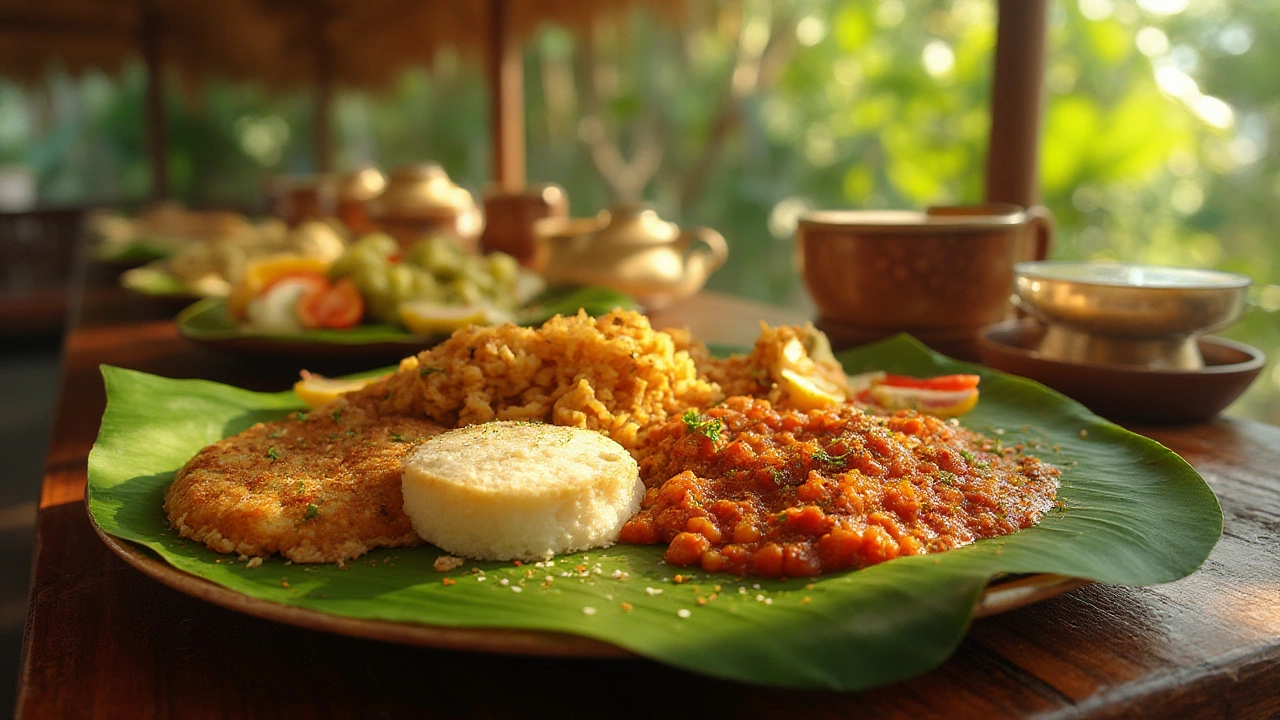
Popular Ingredients and Their Origins
What exactly goes into these dishes? This is where the Caribbean’s wild mix of influences shows up on the plate. You’ll see traces of African, Indigenous, Indian, and European cuisines hiding in every bite. Salted cod, for example, arrived with trading ships from Europe. It’s got a long shelf life, so it was an early staple—now, though, it’s fully local, woven into everything from flaked fish for breakfast to crispy fritters for snacking.
Starchy root vegetables set the stage: yam, dasheen (taro), cassava, and sweet potato fill out the morning spread. These are steamed, boiled, or fried, and if anyone tries to tell you plantain isn’t breakfast material, just hand them a golden, caramelized slice and watch their mind change. Green bananas—sometimes called "fig"—get peeled, boiled, and salted, turning into something far heartier than you’d expect.
Then there’s breadfruit, which is pretty much the avocado toast of the West Indies, only more filling and less likely to show up on Instagram. It’s often roasted until the outside crisps and the inside turns fluffy, perfect for scooping up saltfish or zipping up with hot pepper sauce.
Another breakfast superstar is the roster of Caribbean breads—bakes, johnny cakes, and coconut bread all have their place. Hot out of the pan or the oven, these breads are more than just sides; they're the backbone of the meal. Most folks use them to sandwich saltfish, dip into cocoa tea, or simply butter up for a quick bite between chores. In some families, moms or grandmas wake up at dawn just to make sure there’s enough for everyone.
The protein in these breakfasts is serious business. Saltfish rules, but you’ll also spot smoked herring, sardines, or even curried chickpeas (especially where Indian and African food cultures blend, like in Trinidad). Eggs get a boost—scrambled with tomatoes, onions, and sometimes a shake of curry powder, for good measure. And on Sundays or special holidays, watch out: there might be fried fish, or hot souse (pickled pork or chicken feet) kicking things up a notch.
But let’s talk about what you drink: bush tea is adored across the Caribbean. Every island has its own “remedies”—grandmas swear by lemongrass, fever grass, bay leaf, or soursop leaf teas for everything from headaches to tired feet. People take their tea preferences as seriously as their recipes. Once, Ryan made me lemongrass tea instead of ginger on a sick day, and you’d have thought the world was ending (turns out, he’d just run out!).
Bread, roots, and fish are daily essentials, but so is pepper sauce. Scotch bonnet peppers bring the heat, adding fire and flavor to pretty much everything—if your eyes aren’t watering, it might just be too early in the morning.
Tips for Enjoying and Recreating West Indian Breakfast at Home
Tempted to try a Caribbean breakfast yourself? Good news—it’s easier than you might think to channel those island flavors, even far from turquoise water and waving palms. First, don’t be afraid of bold flavors or starchy sides. Look for ackee in cans at African or West Indian markets, and pick up salted cod from the international aisle of many big grocery stores. Plantains grow in most warm climates, but the green bananas for boiling are easy stand-ins if you can’t find the Caribbean kind.
Breadfruit can be tricky (unless you’re lucky enough to have a tree in your backyard, like my neighbor Claudia). Substitute sweet potato or yam if you can’t source the real deal—they’re just as filling, and they’ll pair nicely with eggs, stews, or saltfish. For an authentic touch, fry up bakes or biscuit-like johnny cakes. They’re simple to mix with flour, a bit of sugar, baking powder, and water—then just shape and fry in oil.
If you want your kitchen to smell like a West Indian home at sunrise, start with saltfish and ackee. Soak salted cod in water overnight, then sauté it with onions, tomatoes, scotch bonnet, and add drained ackee just until it’s hot. Serve it up with fried dumplings or roasted plantain.
Spices are key. Keep allspice, fresh thyme, nutmeg, and cinnamon handy. If you love a bit of sweetness, try making cocoa tea: melt grated dark chocolate (or even raw cocoa sticks) with water, milk, a stick of cinnamon, and a handful of cloves. Sweeten with brown sugar. It’s like hugging yourself on chilly mornings.
Maybe get friends or family involved, too. Setting up a breakfast “fixings” bar—saltfish, bakes, pepper sauce, fruit—lets everyone customize. Kids love it, and even picky eaters end up adventurous after a few bites. Leona loves sweet bakes dipped in cocoa tea. Jasper is all about pepper sauce, then running laps with Milo to "burn off the fire."
Don't stress the rules. Caribbean breakfasts are flexible and forgiving. Forget about having every exact ingredient. The secret sauce is cooking with love, and taking time to eat together. After all, a West Indian breakfast is as much about the memories made as it is about the flavors on your plate.





